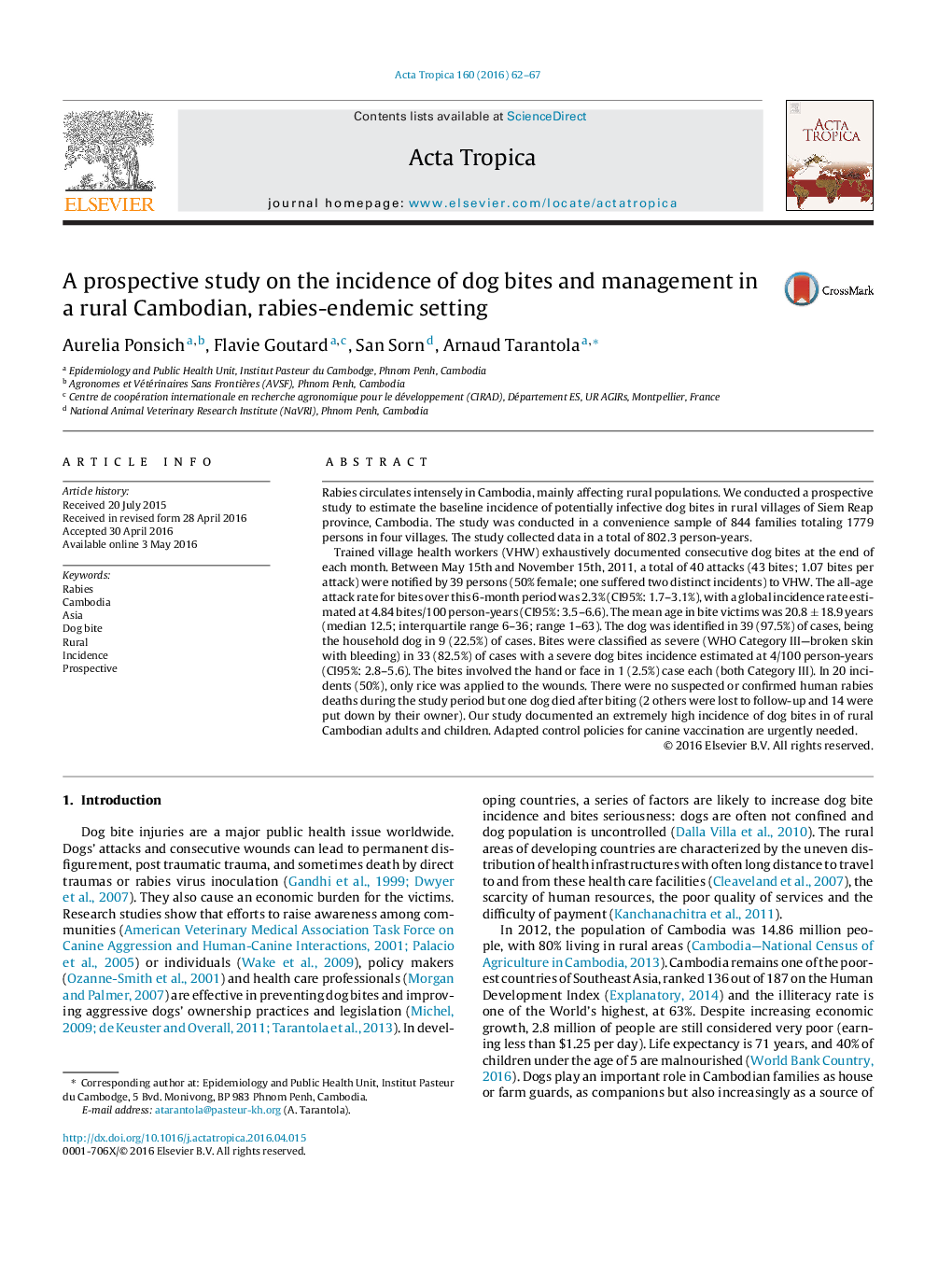| کد مقاله | کد نشریه | سال انتشار | مقاله انگلیسی | نسخه تمام متن |
|---|---|---|---|---|
| 3393713 | 1592764 | 2016 | 6 صفحه PDF | دانلود رایگان |
• We undertook 6-months prospective surveillance of dog bites in 1779 persons in four rural Cambodian villages.
• We found the overall incidence of dog bites to be the highest published, at nearly 5 bites per 100 person-years.
• Some were repeat bite victims, and extremely few had referred for post-exposure management.
• All of the biting dogs were owner dogs.
• Adapted control policies for prevention education, canine population control and vaccination are urgently needed.
Rabies circulates intensely in Cambodia, mainly affecting rural populations. We conducted a prospective study to estimate the baseline incidence of potentially infective dog bites in rural villages of Siem Reap province, Cambodia. The study was conducted in a convenience sample of 844 families totaling 1779 persons in four villages. The study collected data in a total of 802.3 person-years.Trained village health workers (VHW) exhaustively documented consecutive dog bites at the end of each month. Between May 15th and November 15th, 2011, a total of 40 attacks (43 bites; 1.07 bites per attack) were notified by 39 persons (50% female; one suffered two distinct incidents) to VHW. The all-age attack rate for bites over this 6-month period was 2.3% (CI95%: 1.7–3.1%), with a global incidence rate estimated at 4.84 bites/100 person-years (CI95%: 3.5–6.6). The mean age in bite victims was 20.8 ± 18.9 years (median 12.5; interquartile range 6–36; range 1–63). The dog was identified in 39 (97.5%) of cases, being the household dog in 9 (22.5%) of cases. Bites were classified as severe (WHO Category III—broken skin with bleeding) in 33 (82.5%) of cases with a severe dog bites incidence estimated at 4/100 person-years (CI95%: 2.8–5.6). The bites involved the hand or face in 1 (2.5%) case each (both Category III). In 20 incidents (50%), only rice was applied to the wounds. There were no suspected or confirmed human rabies deaths during the study period but one dog died after biting (2 others were lost to follow-up and 14 were put down by their owner). Our study documented an extremely high incidence of dog bites in of rural Cambodian adults and children. Adapted control policies for canine vaccination are urgently needed.
Journal: Acta Tropica - Volume 160, August 2016, Pages 62–67
